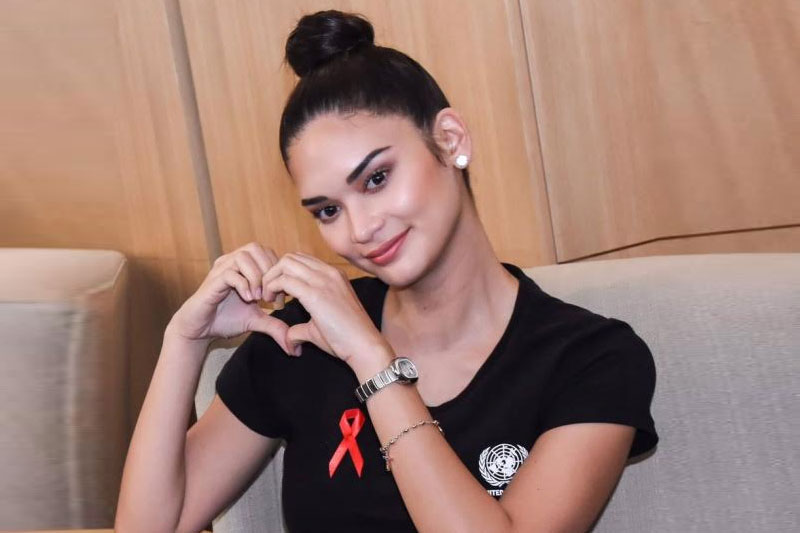Reinventing the uniform

MANILA, Philippines - In business as in the creative arts, the key to surviving the difficult times and a contracting market is to reinvent your product — and pool as much talent as you can to come up with the brightest ideas.
This is what the Peninsula Manila Hotel is doing with its Nielsen’s restaurant, currently undergoing renovation. Its name yet to be revealed, the new restaurant will be launched in October.
“It’s going to be an unparalleled dining destination in Manila,” promises Peninsula general manager Jonathan Crook. “We are excited to introduce a new experience in a spectacular environment that will allow local gourmands and hotel guests to rediscover the Peninsula Manila as one of their top dining choices.”
Peninsula PR director Mariano Garchitorena says, “After 13 years, it was time to reinvent our all-day, international restaurant.” The hotel held a contest among its employees to suggest a new name and received 835 options, which was trimmed down to 125, then to 12. “In the end we chose a name that connotes a beloved, timeless Filipino theme, which was suggested by two employees.”
 For the uniforms of the new restaurant’s staff, the Peninsula invited fashion design students of La Salle College International to compete and come up with a set of winning designs — one for the hostess, one for a waiter, and one for a waitress.
For the uniforms of the new restaurant’s staff, the Peninsula invited fashion design students of La Salle College International to compete and come up with a set of winning designs — one for the hostess, one for a waiter, and one for a waitress.
What was the guideline? That it would represent what the Peninsula stands for — classic, beautiful, timeless — and the students were given swatches of the restaurant’s interiors, designed by Hong Kong-based Zanghellini & Holt, for inspiration.
“Another thing we told them was that the restaurant uniforms shouldn’t look like restaurant uniforms,” adds Garchitorena. Of course, the designs had to be very functional, the material able to withstand multiple washings in the hotel’s industrial machines (students chose sturdy fabrics like polyester wool, twill, linen and cotton), and that the fabrics would be easy to source as the 30-person staff would have three uniforms each.
Twenty-six students submitted five sketches each, done in pencil, charcoals, pastels, watercolor, pen and ink, crayon or any other medium available based on a contemporary aesthetic called “Timeless Filipino.”
Crook adds, “We are always excited to work with fresh Filipino talent. We have always believed that fashion is but one of the many mediums where Filipino artistry finds meaningful and exciting opportunities for expression.”
A competition to bring out fresh talent is not new to Peninsula. In 2006 it held the Peninsula Manila Digital Photography Competition and commissioned the winning entries as décor for the guestroom walls.
 This time, the fashion students had a mentor — Jojie Lloren, Project Runway Philippines’ version of Tim Gunn. Jojie himself knows firsthand what a uniform design entails because in his younger days, he designed the uniforms for St. James School. “It’s a very good exercise for new designers,” he says.
This time, the fashion students had a mentor — Jojie Lloren, Project Runway Philippines’ version of Tim Gunn. Jojie himself knows firsthand what a uniform design entails because in his younger days, he designed the uniforms for St. James School. “It’s a very good exercise for new designers,” he says.
The first 26 designers produced “too stereotypical Filipino clothing and still a bit crude design-wise.” With Jojie’s guidance, 12 designs by nine students were picked for the final competition, held in a fashion show and judged by three lifestyle writers (including myself), the Peninsula’s Jonathan Crook, Mariano Garchitorena, resident manager Macy Lam, and Lloren.
The nine students were Sarah Ko, a 21-year-old South Korean who had two designs in the final competition; Crisel Eslao, 23; Nimrod Garcia, 38; Pamela Villapando, 26, who already runs her own dress shop; Claudine Enriquez, 19; Marge Regala, 35, who runs her own apparel business; Athena Colico-Tandoc, 35; Dirkie Dabbay, 25; and Karl Hans Sutterlin, a senior student from Germany. Sarah, Claudine and Dirkie had two entries each in the final 12 designs.
First prize went to Karl Sutterlin for his red, beige and blue uniforms. He mixed textures and Asian elements, using layered obi belts for the wait staff (with the waitress having a cheongsam collar), and brocade as well as cotton fabrics. His design was a favorite of all the judges, with most of them agreeing that the only weak thing about it was the hostess uniform, which we thought too bank manager-looking.
 Second prize went to Sarah Ko for her white, maroon and cream uniforms with a subtle southern Filipino element running through the belted and pleated short aprons for the wait staff, and across the bodice for the hostess.
Second prize went to Sarah Ko for her white, maroon and cream uniforms with a subtle southern Filipino element running through the belted and pleated short aprons for the wait staff, and across the bodice for the hostess.
Third prize went to Dirkie Dabbay for his tailored maroon tops with elbow-length bell sleeves for the waitress and hostess, and an asymmetrical apron for the male.
The top three winners received a total cash prize of P30,000, as well as F&B and room accommodation prizes. Judging was based on originality and creativity of design, workmanship and cohesiveness.
To ensure that the designs were indeed wearable, a couple of Peninsula employees did the catwalk alongside professional models — to the loud applause of their colleagues. “We always tap our hotel employees first,” says Garchitorena with a laugh. “Seriously, we wanted to be sure that the designs were pretty and functional.”



















